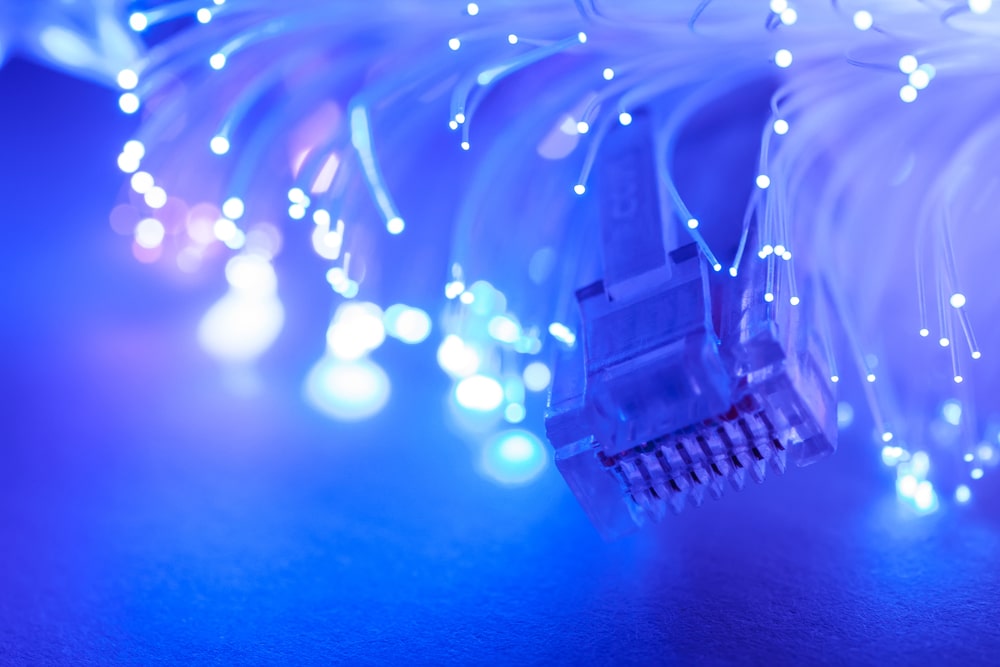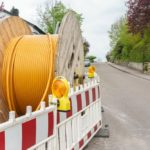News - Construction News
Pure fibre: the missing link in your new build development?

Connectivity is an integral part of the modern home. We are living in a truly digital age, where more Netflix is watched than regular terrestrial TV, more and more smart devices are entering the home all the time, and working from home is becoming increasingly common. Why then, are we still connecting new homes to an archaic copper broadband network? We speak to Elfed Thomas, founder and CEO of British Fibre Networks, a pure fibre network infrastructure provider.
This is certainly not in keeping with consumer expectations. 54% of new home buyers expect pure fibre broadband in their new homes, yet currently, only 4% of the UK has true fibre. Globally, that puts the UK in 35th place in the broadband league tables – a shocking result for a country that considers itself one of the most technologically advanced in the world.
Too often, homeowners move into their new home only to be disappointed by a poor broadband service, or to find that their home has not been connected in time for them moving in. In some cases, customers have been waiting over two months after move in for a connection. This leads to frustration that is often then levelled against builders and construction companies.
Offering pure fibre connected homes would be of immense value to builders and a major selling point over their competitors, enabling them to differentiate from the market. It is hugely appealing to homeowners, the majority of whom now consider good connectivity of equal importance to other utilities, such as water and electricity. Fibre cables should be laid at the digging stage, meaning minimal on-site disruption, and also that fibre will always be installed ready for the homeowner moving in.
It also means that developers could offer a home that is future-proof. The demand on bandwidth is only going to increase as homes become even more digitised. The advent of the smart fridge is already upon us, and the future of homes using facial recognition technology to recognise us as we approach is not too far away. Broadband networks that are anything other than pure fibre will struggle to cope with this reality.
Copper is now redundant – much of the UK’s copper network actually dates back to the Victorian era. The term ‘fibre’, however, has become a cause for considerable confusion. There are a lot of misleading claims in the market surrounding the use of this word. Often, ‘fibre connected’ homes are built with copper still being present somewhere in the connection. Just one small copper link can drastically reduce speeds. The only way now for developers to differentiate a 100% fibre network, with no copper at all, is if it is referred to as pure fibre.
Both builders and consumers have been victims of misleading fibre claims. For the former, it is often the case that they have offered and sold a home with ‘superfast fibre connectivity’, only for it to then fail to deliver on the speeds the homeowner thought they were getting. Asides from bearing the brunt of buyer frustration, it could also cause lasting reputational damage, so builders need to make sure they know what exactly they are laying the groundwork for.
Pure fibre means homeowners could experience speeds of up to 1000Mbps (1Gb) compared to the UK average of just 18.57Mbps. Bandwidth capacity and speed are symmetrical, and upload and downloads speeds are the same. As an example, this means that multiple devices can download films and upload files simultaneously, within seconds.
In its recent Future Telecoms Infrastructure Review, the Department for Digital, Culture, Media & Sport stipulated that all new build homes should be fitted with full-fibre broadband as standard, with UK-wide full fibre broadband by 2033. Even if those proposals come to fruition, however, the ambiguity around the term will no doubt continue, unless stricter regulations are put in place to prevent misuse of the term. Developers that do install a pure fibre network in their site will be ahead of the national curve, and surpass Government policy.
Installing a network that is open to a choice of Internet Service Providers (ISPs) can also add value to a site – instead of being shackled to any one provider, the homeowner can choose from among the market. As the developer, it also means that you aren’t associated with a specific provider, so any consumer disgruntlement with that provider will not trickle through to your homes by association.
Pure fibre presents an opportunity for builders and developers to add value to their new build offering. Having pure fibre infrastructure that runs to the premises with no copper, that is ready in time for the homeowner moving in, and that can offer a choice of ISP, can act as a major selling point, and addresses many modern consumer expectations. Moreover, builders can state with confidence that their homes are some of the best connected in the country, as we work to increase our pure fibre homes from the current total of 4%.
If you are interested in finding out more about key infrastructure trends today, you may wish to attend the flagship infrastructure exhibition at the NEC in April 2019 : UKIS 2019
Click here for more information on how to register or exhibit at the UK Infrastructure Show 2019.
If you would like to read more articles like this then please click here.
Related Articles
More News
- New National Housing Bank
4 Jul 25
Hundreds of thousands of extra homes will be delivered thanks to a bold new government-backed
- Homes England acquires Ripon Barracks from MOD
3 Jul 25
Homes England has acquired land at Ripon Barracks which will be developed into 1,300 new
- University joins forces to address critical construction and housebuilding skills gap
2 Jul 25
The University of Salford is collaborating with Cube Thinking to support Barratt Homes in bridging the shift in skills requirements.






